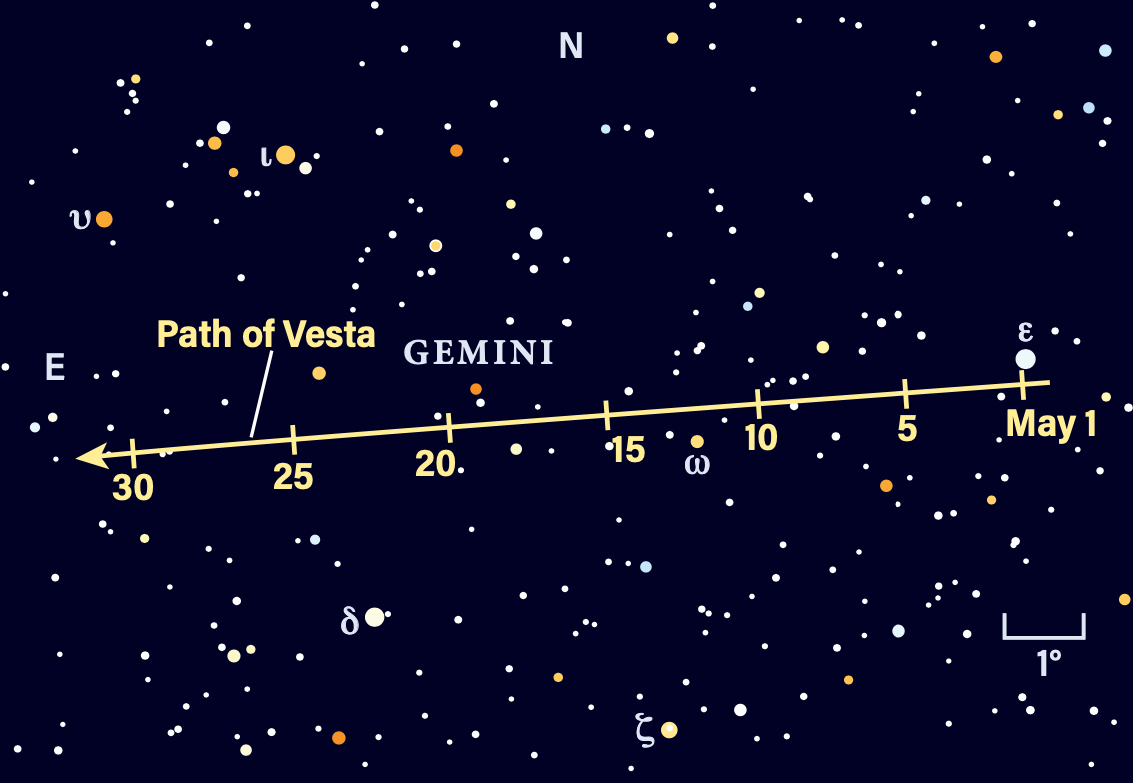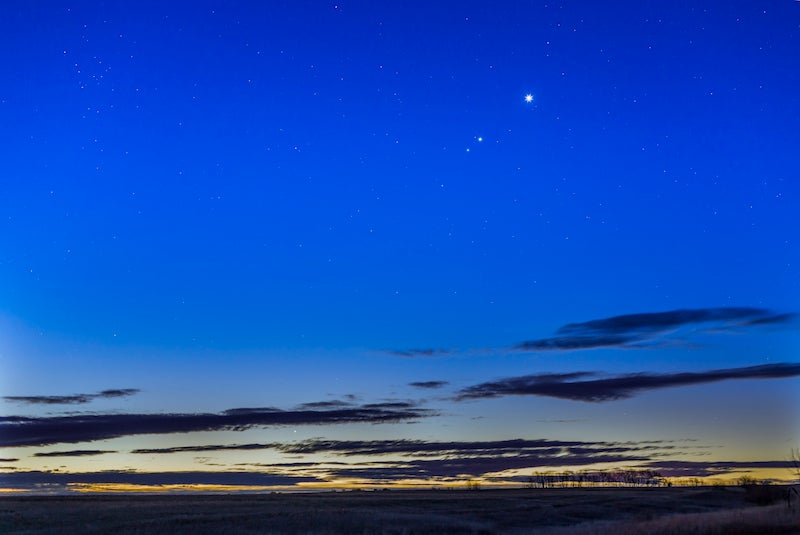
The evening sky loses its last planet early in May, shifting the attention of planetary observers to the morning. Try to glimpse Jupiter before it’s lost in the Sun’s glow soon after sunset. Meanwhile, Mercury, Mars, Saturn, and Neptune are up before sunrise. A waning crescent Moon joins the group twice during May, adding beauty to the scene.
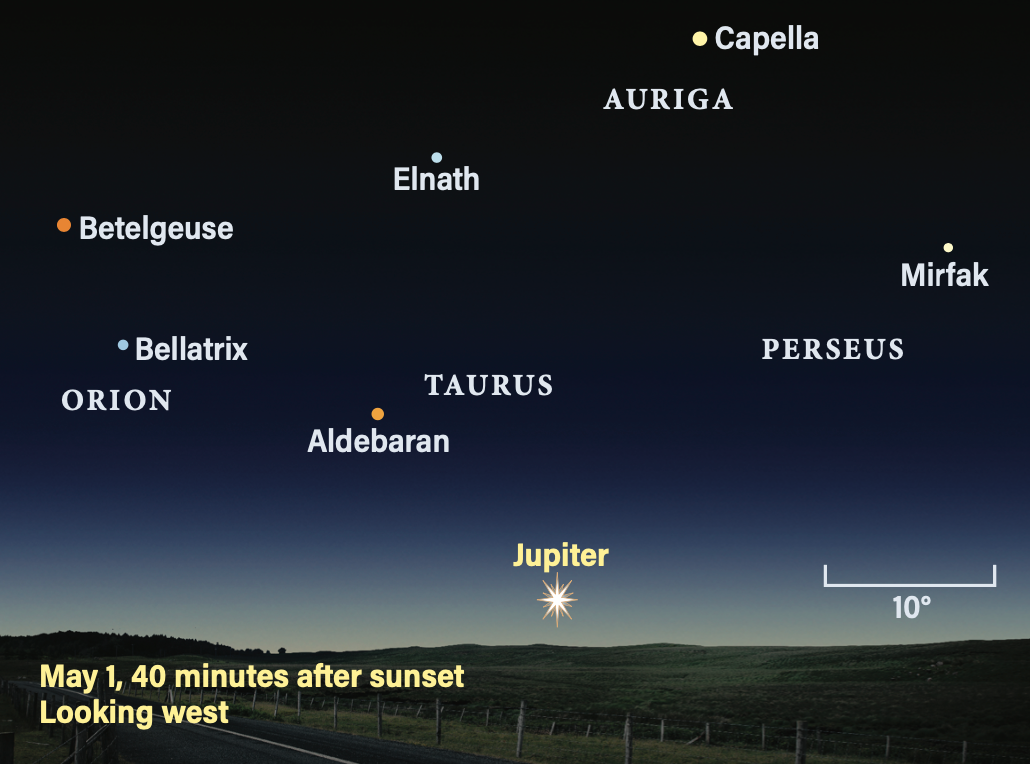
Jupiter sets within an hour of the Sun on May 1 and earlier each successive evening, limiting its observability. On the 1st it shines at magnitude –2, bright enough to be visible in early twilight. At the onset of civil twilight, when the Sun is 6° below the horizon, Jupiter stands 4.5° high. It’s not a great altitude to see visible details on the cloud tops, but for eager followers of the solar system’s largest planet, twilight is still a nice time to view it. The Galilean moons will be visible, although from time to time one or two are hidden behind the planet or transiting in front.
Jupiter is lost quickly and reaches conjunction with the Sun May 18. The gas giant will reappear in the morning sky next month.
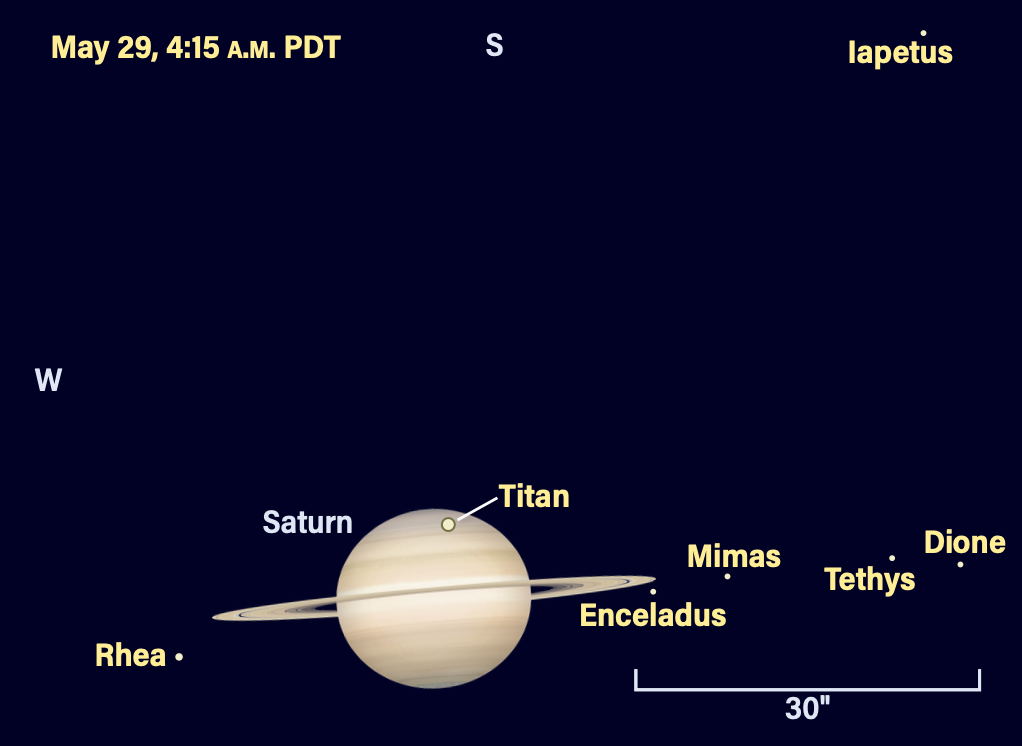
Moving to the pre-dawn sky, first up is Saturn, rising before 4 a.m. local daylight time on the 1st for northern temperate latitudes. You’ll find Saturn 7° northeast of a 24-day-old waning crescent Moon on the morning of May 3.
Saturn lies within a degree of Phi (ϕ) Aquarii, a 4th-magnitude star best seen in binoculars as the sky starts brightening soon after they rise. Regular observers will recognize this star: It was a guide to finding Neptune a few years ago.
The planet climbs higher before dawn as the month progresses. On May 1 it stands 11° high an hour before sunrise; this increases to a respectable 26° by the 31st. The waning crescent Moon has returned to the vicinity on May 31, now 23 days old and less than 2° from Saturn. On this day, the Moon occults Saturn for observers in southern South America and parts of Africa.
The ringed world is dramatic through a telescope. Its disk spans 16″ and the rings just less than 40″. This is the last year before the ring-plane crossing, so the rings appear beautifully slender, currently tilted 3° to our line of sight.
Neptune is difficult to spot at magnitude 7.8, low in the eastern sky as twilight begins. It lies in Pisces about 5° southeast of Lambda (λ) Piscium. On May 1, Neptune and Mars are only 1.7° apart. Mars is easy to spot at magnitude 1.2.
Keen observers might find the ice giant about 5° northeast of the waning crescent Moon on May 4. By the end of the month, the planet is 17° high about 90 minutes before sunrise, placing it in easier range for telescopes and binoculars.
Returning to Mars, its tiny 5″-wide disk reveals very little and the planet remains low in the eastern sky. It crosses southern Pisces, spends a few days in the second week of May cutting the corner of Cetus the Whale, then returns to Pisces for the remainder of the month. The Red Planet ends the month at magnitude 1.1.
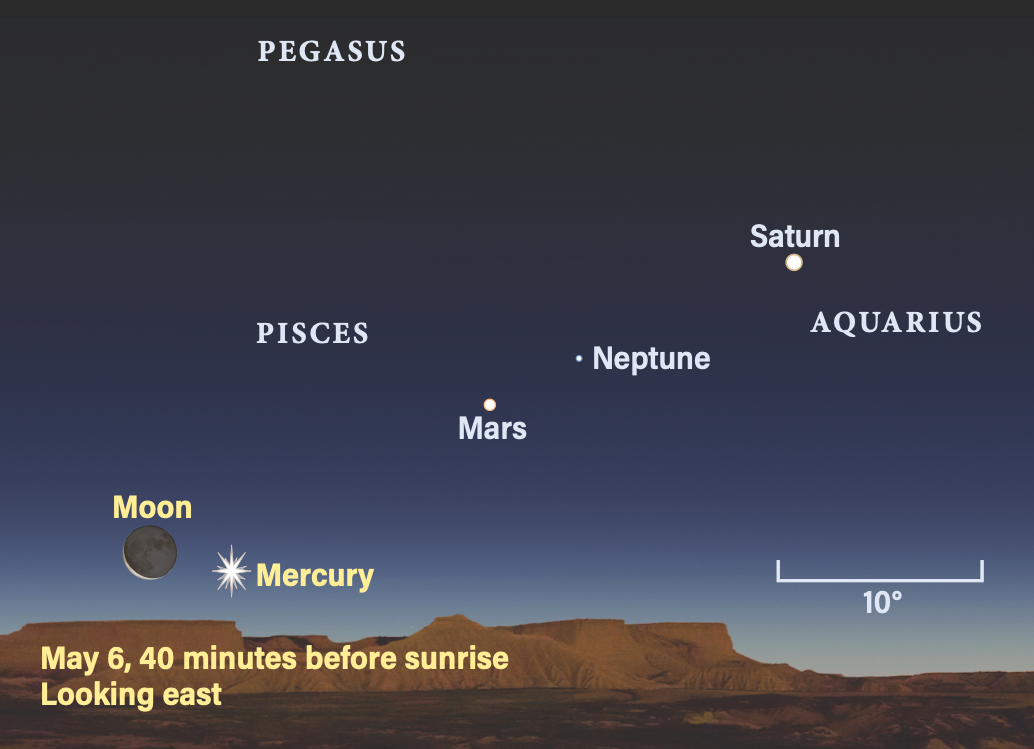
Mercury returns to the morning sky and stands less than 5° from a very thin waning crescent Moon early on May 6. With the sky brightening, look for the slender Moon just 3° high 40 minutes before sunrise, with Mercury to the lower right. Mercury shines at magnitude 0.7 and may be best viewed through binoculars, given the brightening sky.
On May 9 Mercury reaches its greatest western elongation, 26° from the Sun. The low angle of the ecliptic keeps the innermost planet quite low to the eastern horizon, making it much more favorable for observers in the Southern Hemisphere.
Mercury brightens and is magnitude 0 on May 19, when it is 4° high 30 minutes before sunrise. After this, it continues to brighten but maintains a similar altitude each morning when viewed at the same time before sunrise. Mercury reaches magnitude –0.5 by the 28th, when you might glimpse it standing 3° high 30 minutes before sunrise. It’s a difficult object to spot, but observers with a clear eastern horizon — and in particular those that live at higher altitudes — have a chance of following the planet for another week.
Uranus passes through solar conjunction on the 13th. It is too faint and close to the Sun to view this month.
Venus is also too close to the Sun for observation this month, as it approaches conjunction with the Sun in mid-June.
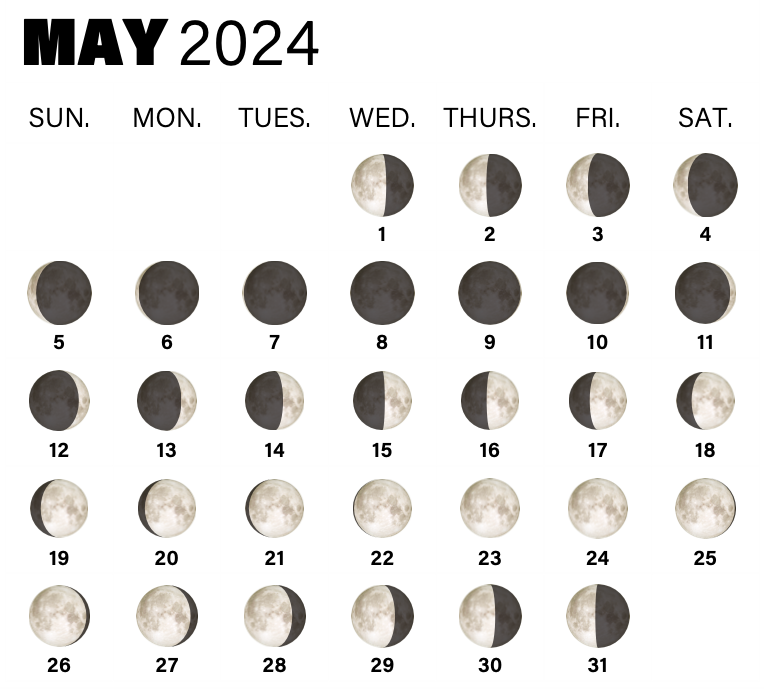
Rising Moon: Building by pounding
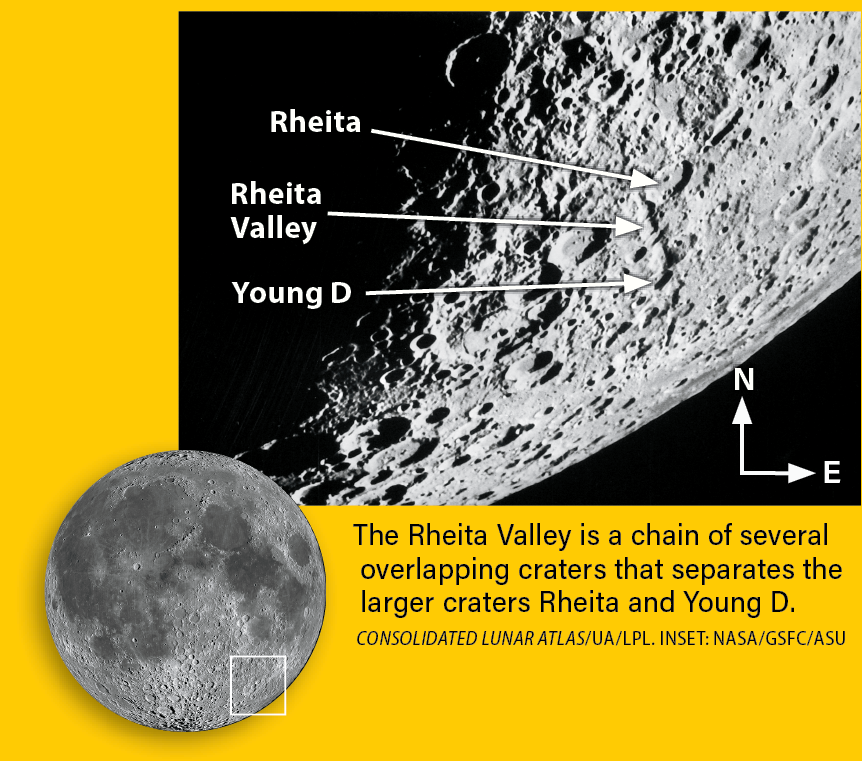
Second on lists of lunar valleys is Rheita. The more famous Alpine Valley was created when the crust pulled apart, allowing the land to collapse. In contrast, the Rheita Valley is understood to be a nice line of overlapping craters where each impactor fell in rapid succession, obliterating the standard central peaks and rims of the ones formed just before.
Around any young and large impact feature you can find several crater chains pointing radially away from its center, formed as debris from the excavation shoots out in linear sprays like a spoke on a bicycle wheel. The Rheita Valley is the widest such chain, implying that the original impact must have been rather large. It was: Mare Nectaris lies not far to the north.
With a bit of practice and an eye for detail, you can tell that the Rheita Valley is neither the freshest nor oldest feature in the southeastern quadrant of the Moon. On the northeastern flank, note a couple of chopped-off circles. Those must have come before — an idea confirmed by the worn-down appearance of their rims and floors, a consequence of long-term pounding. And Rheita Crater to the northeast and Young D at the south end obviously arrived later because their forms are sharper and lie on top of the valley, reshaping their parts of it.
Sunrise over the Rheita Valley has occurred by the 11th, but the view on the 12th will be closer to that in the accompanying image. Take another look on the 24th and 25th, when the lighting will be reversed under a setting Sun. This is when you can readily see that the valley points right back to its origin at Mare Nectaris, the Sea of Nectar — a fanciful name for a lake of lava!
Meteor Watch: Improved prospects
This is the year to watch the Eta Aquariid meteor shower. In addition to a favorable Moon (New Moon occurs May 7), Earth passes very close to a stream of debris ejected by Halley’s Comet (the shower’s parent object) about 3,000 years ago.
The shower is active from April 19 through May 28 and peaks on May 5. The radiant lies near Zeta (ζ) Aquarii and rises at 2:30 a.m. local daylight time in the continental U.S., reaching an altitude of 20° two hours later. This gives most observers a fine opportunity to watch for an hour or two before morning twilight. The predicted peak zenithal hourly rate is 50 meteors per hour but since the radiant is not overhead, observed rates are normally a dozen per hour.
However, this year could see an increase in rates the morning of May 3. Material left by Halley’s Comet is affected by various gravitational resonances and the threads of debris wander like a silk scarf in a breeze. On the 3rd, Earth passes through a thread left by the comet in 985 b.c.e., potentially leading to more and brighter meteors. But like predicting the number of snowflakes in a snowstorm, such calculations are difficult and reality can vary greatly. One thing is for sure: It’s worth observing a few days prior to the peak. If you do see a rise in the number of meteors, you’re seeing the result of a passage of Halley’s Comet some 3,000 years ago. How cool would that be?
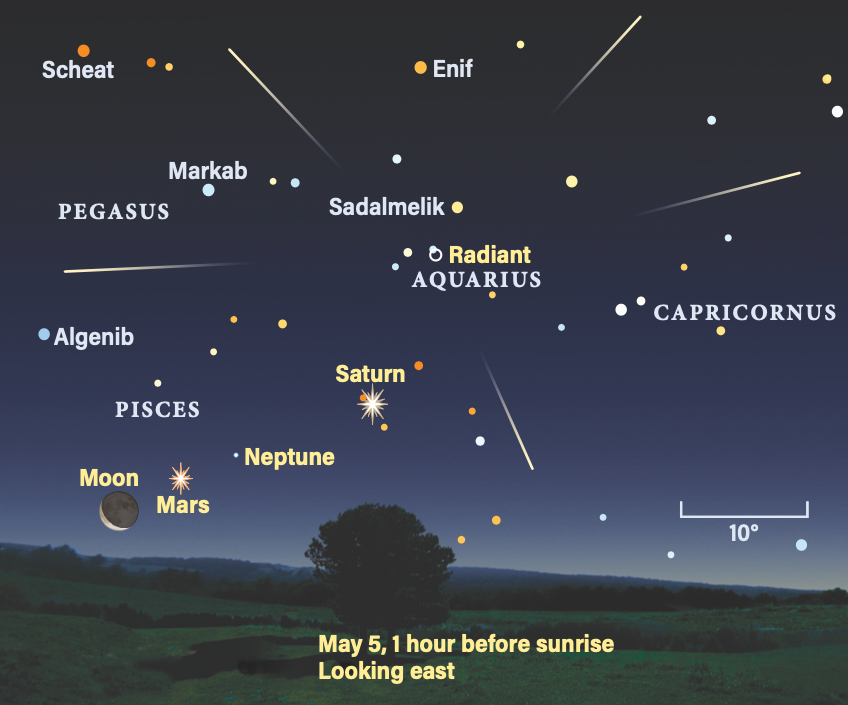
Comet Search: Plenty to see
Be ready at the end of astronomical twilight to catch Comet 13P/Olbers sinking in the northwest. It should be shining at 8th magnitude, comparable to the nearby Crab (M1), the nebula that started Messier on his catalog. Contrast their shapes and profiles. As you sweep between them, enjoy some starless voids: nearby corridors of interstellar dust, some sporting Barnard numbers.
Imagers will delight in the comet’s diatomic carbon-green halo as Olbers courses past the hydrogen-red Tadpoles of IC 410 from the 16th to the 18th. The twilight is more of a challenge than the Moon. Catch the comet again on the evenings of the 20th to the 22nd, less than 1° from the splashy star cluster M36.
Returning every 69.5 years, Olbers never gets closer to the Sun than Earth. It was first seen by Heinrich Olbers in 1815. (This is the same Olbers who famously framed the “Why is the sky dark?” paradox.)
A second comet, C/2021 S3 (PanSTARRS), keeps us company overnight in the first half of May, fading from 8th to 9th magnitude as it crosses the colorful star fields north of Deneb.
Evening observers south of the equator can savor the potentially naked-eye comet 12P/Pons-Brooks for a few more nights before it fades into binocular range.
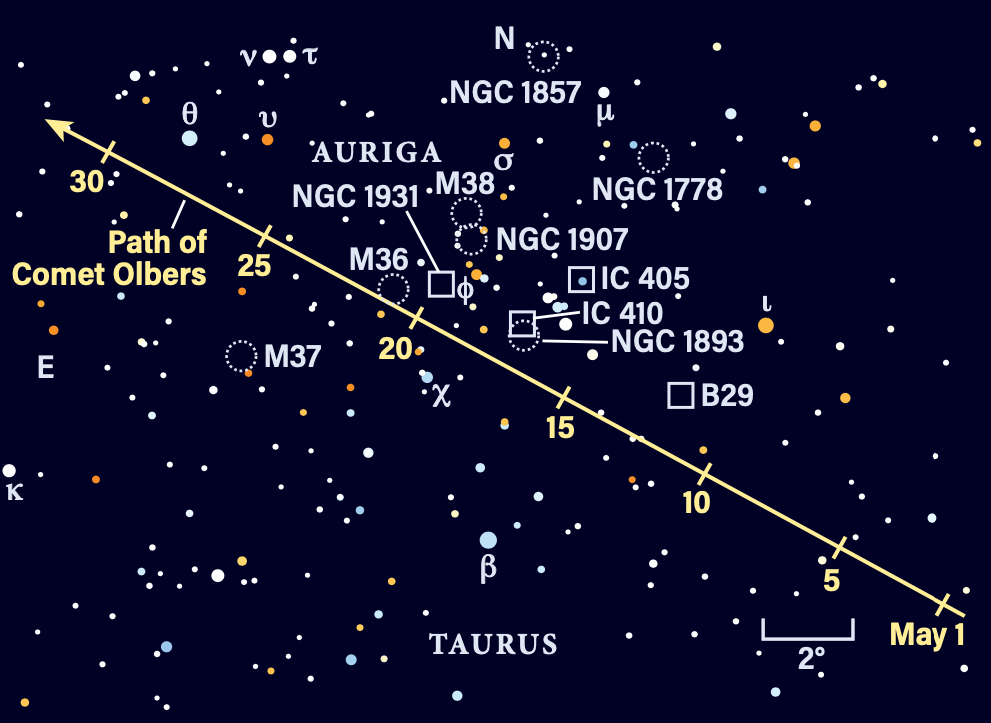
Locating Asteroids: Crossing the Twins
Frequently, the brightest and easiest-to-track asteroid through suburban skies is 4 Vesta. Starting May at magnitude 8.3, the main-belt world is falling behind Earth in its orbit so slowly that it barely fades 0.1 magnitude all month. Vesta is typically the second- or third-brightest dot in the field of view, despite crossing in front of the rich winter Milky Way in Gemini.
By comparing star charts to the view in his telescope, Heinrich Olbers (the same guy who found Comet 13P) noted one light out of place, making it the fourth “missing planet” discovered between Mars and Jupiter. Like him, you should make a sketch of the field and return in a night or two to confirm that the interloper has moved. From May 22 to 26, Vesta is almost alone, but several other nights offer the chance to see it shift in a three-hour session as angles in a pattern change: May 1 to 3, 9, 19, 29, and 31.
The glorious crescent Moon, replete with earthshine, passes by on the 11th only 3° to the north, as Vesta lies an apparent Moonwidth north of 5th-magnitude Omega (ω) Geminorum. This time it’s worth trying for the lunar conjunction instead of avoiding it.
